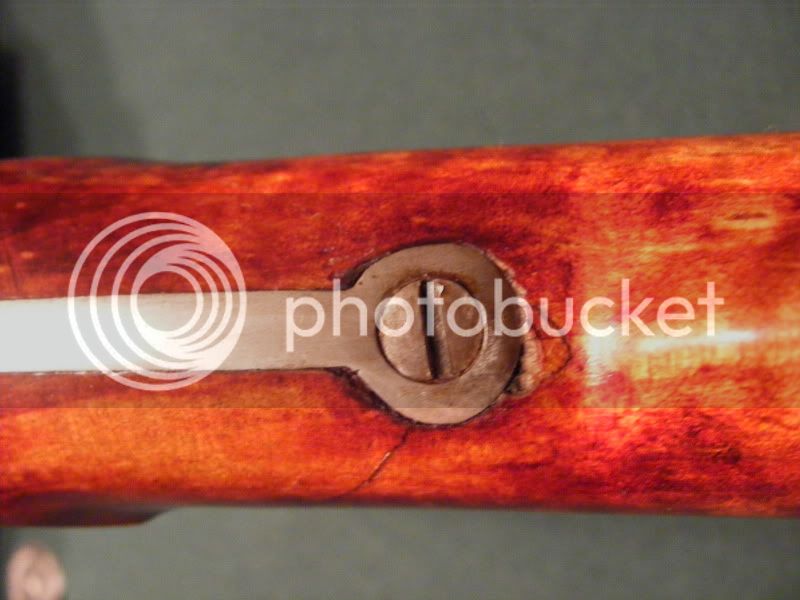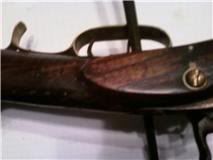A friend has brought me a flintlock he built about 7 years ago for some work. He has asked me to do a repair on the stock. I am putting this up for advice on how to proceed. The problem is in the wrist area around the tang screw. As you can see in the photos, the back end of the lollipop tang has begun to dig into the stock and a “V” shaped crack has formed radiating from the tang screw forward and down the wrist. The cracks I fell are superficial, you can catch you fingernail on them however. As it is right now, the wrist still seems solid. The owner uses this gun for hunting and target shooting. He consistently practices with his usual hunting load ”“ 75 grains of Swiss 3F pushing a .495 round ball. Several thousands of rounds have been put through this gun with that load. Obviously the punishing recoil over the years is causing the issue. He reports that the crack showed up this past week while hunting and shooting in single digit temperatures which probably contributed to the problem. I am seeking any opinions on whether or not this damage is repairable and if so how, or should I just quote the guy a price on a restock?











